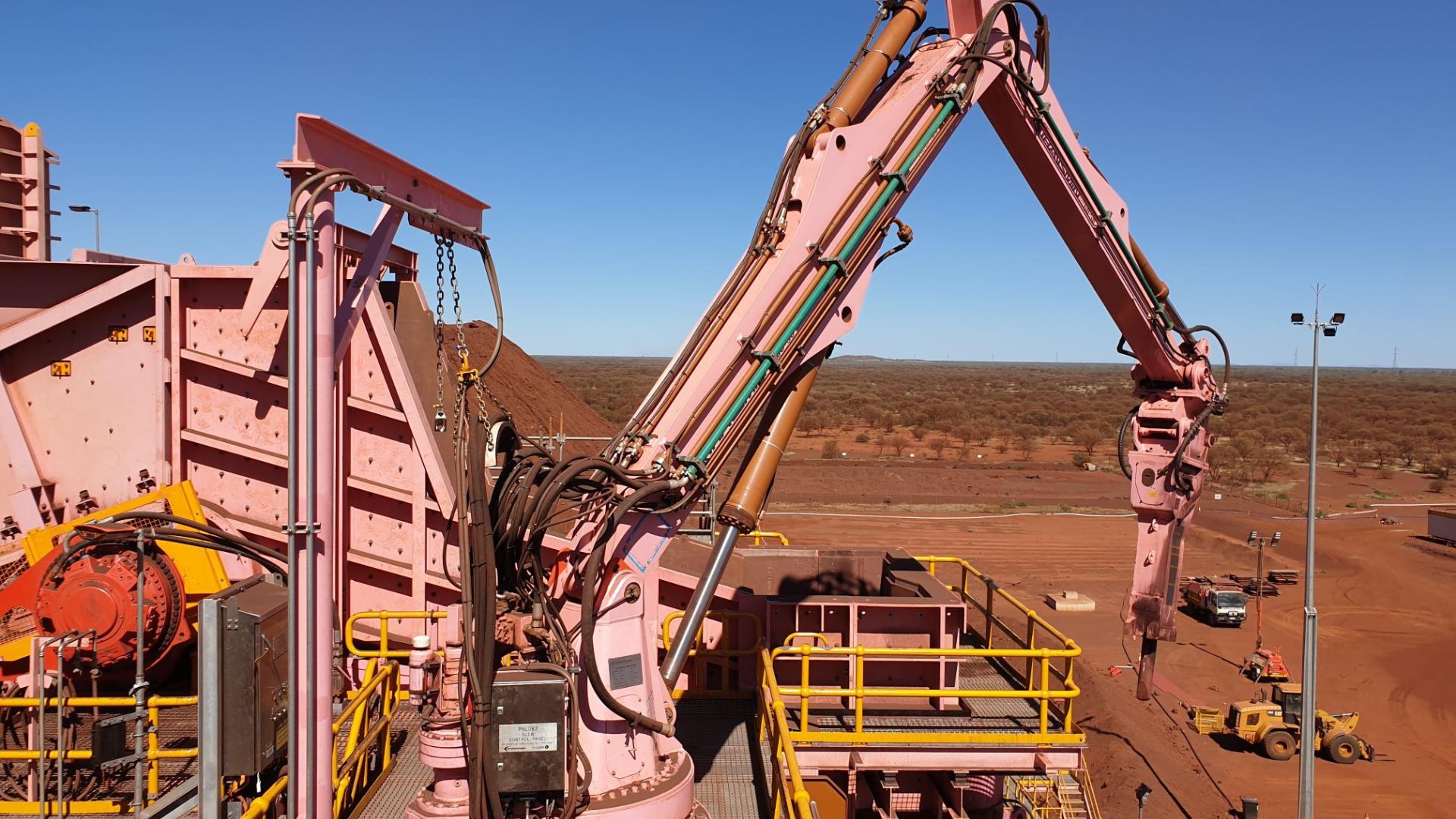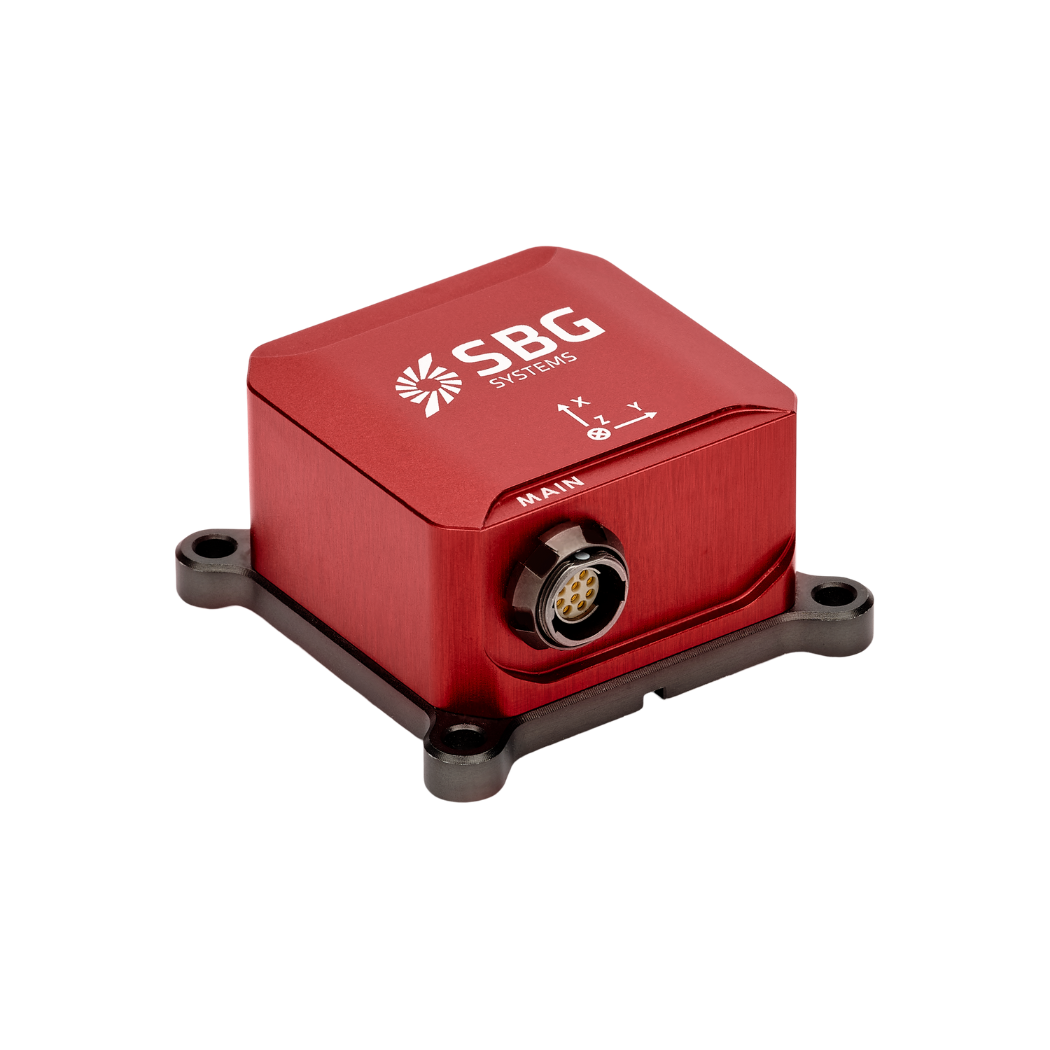Ellipse-A mini AHRS chosen for Remotely Operated Rockbreakers
Ellipse-A are integrated in Transmin’s remotely operated Rockbreakers for accurate arm positioning.
“The ability of the sensors to withstand machine vibrations and removing the need for calibration or re-calibration of the sensors eliminates after sales maintenance and enables a more efficient workflow.” | Michael H., Senior Automation & Controls Engineer at Transmin
Transmin is an Australian company established in Perth. They provide innovative engineered equipment and services to the mining-resources and bulk materials handling industries. Since 1987, the company has been manufacturing:
– Rock Breakers,
– Heavy Duty Bin Isolation Gates,
– Low Profile Feeders,
– Belt Feeders, and
– Packaged Reagent Plants for Lime and Flocculant.
Their rock breaker control system is named RockLogic and is designed to maximize speed, productivity, and safety.
Real-time Rock Breaker Arm Attitude/Relative Position
Transmin’s RockLogic rock breakers use the Ellipse-A high-performance Attitude and Heading Reference System (AHRS) to monitor the orientation and determine the relative position of the rock breaker’s arms.
We directly installed the Ellipse-A on the arms and connected it to Transmin’s PLC system, which autonomously operates the entire system.
Operators can control Transmin’s rock breakers locally or remotely. Furthermore, the AHRS aids in collision avoidance.

With our Ellipse Line, we provide precise relative positioning, preventing collisions with surrounding equipment and damage to both the rock breaker and the site.
Ellipse-A is a miniature industrial-grade AHRS providing 3D roll, pitch, and magnetic heading. The chosen model comes with a durable IP68 enclosure, robust to dust and water ingress.
Interfacing the Ellipse-A with the company’s PLC system has been straight forward thanks to the CAN Bus Protocol standard on the Ellipse series. Having a standard-compliant interface to connect the sensor makes its installation and use immediate and effortless.
Mini AHRS, Maxi Resistance to Vibrations
Rock breakers undoubtedly generate a lot of vibrations and shocks due to both high-speed motions and the hammering of rocks. The company primarily focused on addressing these vibrations.
Finding a highly precise and robust inertial sensor for these extreme conditions posed a challenge.
Comparative tests with several market sensors demonstrated the superior quality and performance of SBG Systems’ products, leading Transmin to choose the Ellipse-A. Our new line of Ellipse sensors is renowned for their robustness.
We selected Ellipse accelerometers and gyroscopes from the high-end components available on the market.
Over the years, we developed and enhanced our Ellipse algorithms to meet the specific dynamics of heavy machinery.
We obtained measurements that remain coherent and robust with no drift. Subsequently, filtering helps handle vibration, and installation parameters can also improve the solution.
“The Ellipse have been used for years and have always provided long-lasting operations.” | Michael Hamilton, Senior Automation & Controls Engineer at Transmin.
Australian Desert: why is Calibration Crucial?
Transmin’s rock breakers mainly operate in Australia and its desert, where temperatures can typically range between 0 and 45°C, and even rise to 60°C under the sun.
How to provide such reliability in such extreme conditions?
All Ellipse miniature sensors benefit from an individual high-end calibration using multi-axis rotary tables and temperature chambers, enabling high performance from -40 to 85°C.
Thanks to a strict screening process, only sensors that meet specifications are kept for delivery. This is how SBG Systems builds trust with its customers.
Finally, SBG Systems’ MEMS-based products do not require periodic calibration, sparing Transmin the trouble of having to recalibrate the sensors themselves or to add a quality control checks.
Transmin mainly operates all over Australia but also in Chili, South Africa, and Canada. Most of their operations are run in remote areas difficult to access, such as underground mines and remote mining areas, etc.

Therefore, having to travel all the way back to the main site for maintenance purposes would not be as efficient as it is with a calibrated sensor.
Ellipse-A makes remote operations easier and, thus, also helps reduce maintenance costs. It allows the equipment to continuously work daily without interruptions, saving a tremendous amount of time.
“The lack of requirement for calibration or re-calibration of the sensors eliminates the need for after-sales support of the sensors. This could be considered to be more efficient, by way of providing a product that does not need further maintenance work once installed and in operation.” Michael H. commented.


Ellipse-A
Ellipse-A is an affordable and high-performance Attitude and Heading Reference System (AHRS). It embeds a best-in-class magnetic calibration procedure for optimal heading, and is suitable for low to medium dynamic applications.
Factory calibrated from -40°C to 85°C, this robust inertial motion sensor provides Roll, Pitch, Heading, and Heave data.

Ask a quotation for Ellipse-A
Do you have questions?
Welcome to our FAQ section! Here, you’ll find answers to the most common questions about the applications we showcase. If you don’t find what you’re looking for, feel free to contact us directly!
What is the difference between AHRS and INS?
The main difference between an Attitude and Heading Reference System (AHRS) and an Inertial Navigation System (INS) lies in their functionality and the scope of the data they provide.
AHRS provides orientation information—specifically, the attitude (pitch, roll) and heading (yaw) of a vehicle or device. It typically uses a combination of sensors, including gyroscopes, accelerometers, and magnetometers, to calculate and stabilize the orientation. The AHRS outputs the angular position in three axes (pitch, roll, and yaw), allowing a system to understand its orientation in space. It is often used in aviation, UAVs, robotics, and marine systems to provide accurate attitude and heading data, which is critical for vehicle control and stabilization.
A INS not only provides orientation data (like an AHRS) but also tracks a vehicle’s position, velocity, and acceleration over time. It uses inertial sensors to estimate movement in 3D space without relying on external references like GNSS. It combines the sensors found in AHRS (gyroscopes, accelerometers) but may also include more advanced algorithms for position and velocity tracking, often integrating with external data like GNSS for enhanced accuracy.
In summary, AHRS focuses on orientation (attitude and heading), while INS provides a full suite of navigational data, including position, velocity, and orientation.
